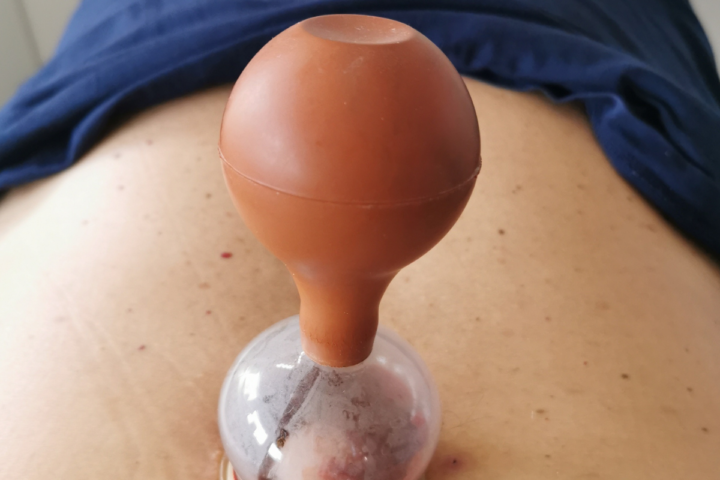Sciatica is a sudden onset of pain, usually localised in the lower spine. It is caused by compression, inflammation of the sciatic nerve or the spinal nerves that form it. This pain syndrome can take on an acute or chronic form, making daily functioning difficult. Risk factors include sitting or working while lifting heavy objects. One effective treatment is physiotherapy, which can help relieve pain and restore function.
What is sciatica?
Sciatica, also known as ischialgia, is a pain syndrome that originates in the lower back. In the case of this intractable pain condition, the pain may spread from the buttock area, passing through the back of the thigh to the lower leg and foot. Sciatica results from pressure exerted on the sciatic nerve, which is the largest peripheral nerve in the human body, or on the spinal nerves exiting the lumbosacral region of the spine. This condition can cause significant discomfort and limit a patient's daily functioning, so it is important to understand its mechanism and treat it effectively.
Sciatica - causes

The main cause of sciatica is thought to be discopathy, a disorder of the intervertebral discs, specifically a herniated intervertebral disc, which occurs at the level of the spine through which the spinal nerves pass. There are also other factors that can lead to this bothersome condition, such as:
- Tightness of the spinal canal, caused, for example, by significant degenerative changes in the spine.
- The piriformis muscle syndrome, which can strain the muscles adjacent to the sciatic nerve in the gluteal area.
- An injury that can damage a nerve, cause an intramuscular injection in the nerve area or lead to a fracture of the femur.
- Spondylolisthesis.
- Local inflammation.
- Neoplastic lesions in the spinal canal.
- Systemic diseases, such as diabetes, which can affect the nerves.
- Infectious diseases.
Generally speaking, any condition that causes irritation of the nerves along their course can lead to the development of this condition. Factors such as sedentary work or work involving heavy lifting, a sedentary lifestyle, poor diet and being overweight, as well as pregnancy, increase the likelihood of the condition developing.
What are the symptoms?
Symptoms of sciatica may gradually worsen or appear suddenly. Characteristically, pain is felt in the lumbar region that radiates towards the lower limbs. The pain usually increases when bending over and lifting the leg in a supine position, which is called Lasègue's sign. It is often accompanied by feelings of numbness, sensory disturbances, tingling in the lower limbs and muscle weakness. In the case of sciatica, the paraspinal muscles often become tense, leading to restricted mobility in the lumbar spine. In the most severe cases, patients may experience difficulty with movement, as well as urination and defecation. In terms of duration, sciatica can be divided into acute, which lasts from three to as long as 10 weeks, and chronic, which usually lasts for more than a dozen weeks.
Diagnostics
The process of diagnosing sciatica begins with a thorough patient history and physical examination. In establishing the diagnosis, the doctor may perform various tests, including the Hoover test, where a hand is placed under the heel of the healthy leg while the patient is lying down and asked to lift the affected leg (a patient with sciatica will have difficulty performing this movement). However, the most commonly used test is the Lasègue test, where pain in the affected limb occurs when the healthy leg is raised in the supine position.

In addition, muscle tone and strength, sensation in the lower limbs, range of movement and limb circumference measurements are assessed. Imaging studies play an important role in diagnosis. Although rarely used, X-rays can identify degenerative changes and spinal stability. For more accurate information, the doctor may recommend an MRI or CT scan, especially if conservative treatment is not working. Other more advanced tests are used less frequently, only in more complex cases.
Physiotherapy for sciatica
The treatment of sciatica using physiotherapy methods is based on carrying out planned movement therapy, known as kinesitherapy. As part of this therapy, the patient performs appropriate sets of exercises adapted by the physiotherapist. The therapist's role is to monitor progress and assist with these exercises. As the patient improves, he or she can perform the exercises independently. The choice of the specific type of exercise depends primarily on the severity of the pain, tailoring the therapy to the individual needs of each patient.
At MTS Holistic Therapy Rehabilitation Centre, we use the latest medical advances and the techniques used are always tailored to the individual needs of the patient. As a result, we achieve the highest effectiveness in treating conditions and reducing pain levels. Below are the methods of spinal rehabilitation used in our clinics.

As part of sciatica physiotherapy, various therapeutic techniques, including soft and hard tissue manual therapy, various types of massagesuch as deep, fascial and therapeutic, as well as pinotherapy. In addition, abdominal therapy plays an important role. These techniques are based on special methods aimed at relaxing the patient's muscles and providing relief from degenerative changes and post-traumatic conditions. One innovative approach is also pinopressure.
What are other ways to treat sciatica?
Physiotherapy for sciatica is based on various physical techniques. At MTS, we use techniques such as radiofrequency wave, shock wave, magnetic field and high-energy laser. They rely on using the physical properties of the body's tissues. They quickly provide relief, helping to reduce pain, swelling, inflammation and speeding up the healing process. Their effects are often felt almost immediately after treatment. Importantly, physical techniques are safe for the patient's health and provide comfort during therapy. They are particularly effective in the treatment of both chronic and acute pain.




